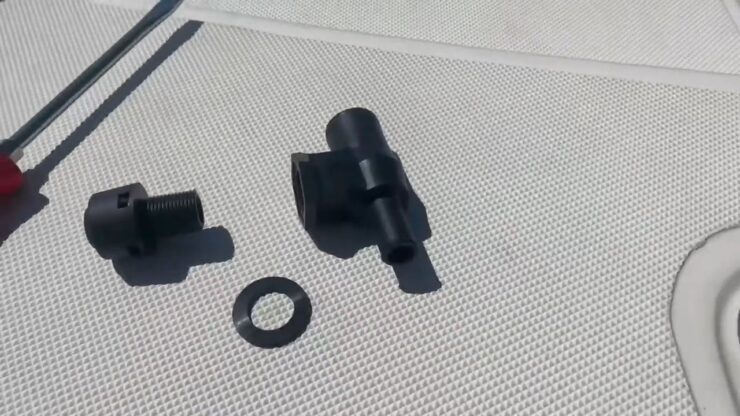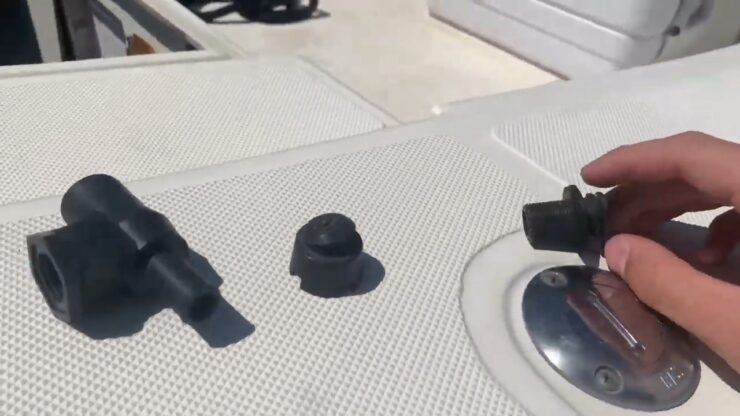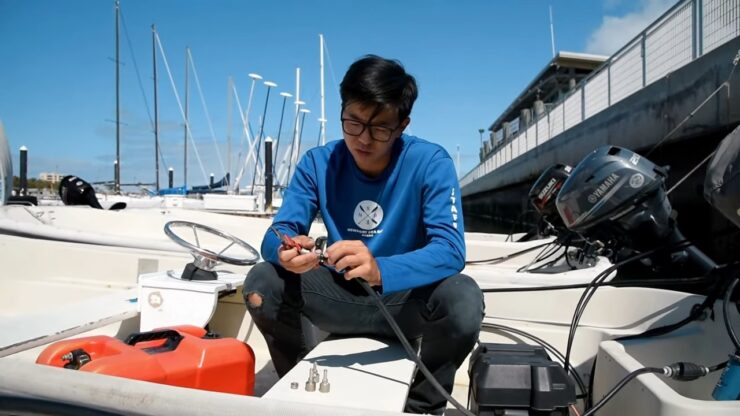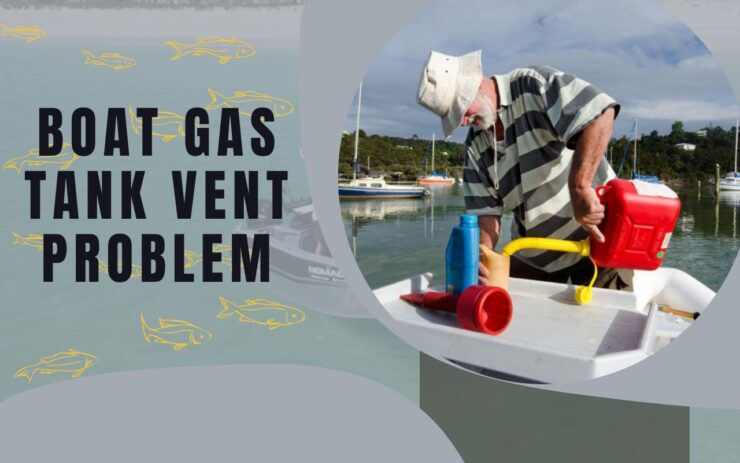Recently you had a new fuel tank installed. You discovered a problem with your boat gas tank vent. Now, you might also be facing difficulty putting gas in the tank.
What can cause the boat gas tank vent problem?
The causes can be improper installation, an unclean gas vent, and not using a clamshell. It can even happen if you don’t keep the through-hull dry. Lastly, if there’s no Fuel Surge Protector, this can create an issue.
Have you got a few minutes? You can go through the five solutions to maintain your gas tank vent system. Trust us, they definitely work.
Let’s get to it!
Table of Contents
ToggleBoat Gas Vent Problem: 5 Guaranteed Solutions
These problems are not major issues. So, we assure you that it’s possible to solve your boat gas tank vent problem. Just stay with us till the end.
Before jumping into the solutions, ensure that your engine is working properly. For that, you can use starting or stabil fuel treatment to allow your engine to run smoothly.
Also read: Boat Fuel Gauge Stuck on the Full
Once you’ve made sure your engine is fine, let’s get to fixing your gas tank vent!
Problem 1: Improper Installation of Vent Hose in The Vent Line

Well, if the vent hose it’s not installed correctly. You will see these will allow fuel to puddle. This prevents the marine fuel tank vent system from functioning correctly.
How can we fix this?
Solution
All we have to do is not let the gas accumulate in your boat’s vent line.
Now, what does it mean? In simple words, don’t let fuel get trapped in your boat’s vent line. Now, how can you do that?
In the first place, when installing a vent hose, avoid sags anywhere in the vent line.
Moreover, a typical vent line will run across the top of the tank sideways. It should hit the hull side, then angle upward to the vent fitting.
After that, the pipe should be as straight as possible. This will allow any petrol to drain back into the tank through gravity. Thus, the fuel will not get stuck in the boat’s vent line.
Problem 2: The Gas Vent Screen Is Not Clean or Cogged
Fine-wire screens on fuel vents keep out debris along with nesting insects and spiders. Some screens also function as flame arrestors, preventing sparks from igniting fuel vapors.
Therefore if they are not clean, it’ll prevent the exhaust from hot air. Eventually, it might cause an accident.
Solution
We should always keep our boat’s gas vent screen clean to prevent it from clogging.
To clean your vent screen properly, you’ll need a small wire brush to remove the gunk.
Otherwise, you may have to replace the vent. Especially in case, the corrosion has eaten away at the mesh.
Now, on top of the fuel tank, locate the access to the fuel tank fill and vent connectors. Once you’ve reached these hoses, remove the 5/8″ vent hose.
Blow on the opposite end of the hose. At the same time, disconnect it to see if air comes out. Suppose the air flows through the hose normally. Then the hose and the vent opening on the boat’s side can’t be the issue.
In fact, most vent ports on boat gas tanks are built into the tank. So, it’s not a problem at all.
However, if the vent is a screw-in fitting with a 90-degree barb, it could be problematic. Unscrew the fitting carefully and inspect it. If the fitting is clean, the gas tank vent side of the system is not the issue!
Problem 3: Not Keeping The Through-Hull Vent Dry

Through-hull fuel vents are intended to be installed vertically or slightly inclined. Thus, the exterior hull surface allows fumes to vent outboard rather than within the boat.
However, this might cause the water to enter the hull.
Solution
You can mount the vent relatively high so it stays protected from water splashes. Another option is to angle the vent opening aft and slightly downward while underway. This protects it from oncoming waves and prevents rain or dew from entering the vent.
Furthermore, several vents on the market today offer designs that help shed water. The simplest you can find is a 90-degree upward bend in the hose fitting.
To keep your boat from getting too wet, consider using a marine fabric guard. Be aware that there’s some distinction between 303 fabric and 303 marine fabric guard.
Problem 4: Not Using Clamshell Cover to Protect The Fuel Vent
Your boat may be exposed to a lot of heavy seawater sprays. Moreover, you’re also having difficulties with water in the fuel tank. You want to protect the vent from seawater.
Solution
Consider using a clamshell cover to cover the vent. The clamshell aft is slightly downward deflecting the oncoming seawater as well as rain.
You can find various models in the market. A chrome-plated brass model with a 2-inch-wide clamshell, a stainless-steel version, or an ABS-plastic SSI 2 5/8-inch-wide clamshell will also work.
Also read: Best Marine Fuel Line
Problem 5: No Fuel Surge Protector to Prevent Fuel From Spilling

You might wonder why fuel is spilling when you are refueling. How can you stop this? Now, oil leaking from the lower unit or engine is a different issue. But the solution is easy.
Solution
If you fill the tank with a no-spill valve, also known as a fuel surge protector. This will prevent fuel from pouring out of the vent.
It’s not only environmentally friendly, but it also keeps spilled fuel or diesel from staining the hull.
Each device has hose barbs on both ends. Make sure it’s the right way up because these valves rely on gravity to function correctly.
Generally, no-spill valves can malfunction as they age. Gummy fuel residue causes the ball inside the valve to stick and prevents the tank from breathing.
If you shake the valve and the ball within does not immediately rattle, it’s broken. It’s time to get a new one.
We have provided detailed solutions to your problem. Now, you’ll have an unproblematic boat gas tank vent.
FAQs
How many times should your gas cap be clicked?
It has to do with pressurizing the gas tank to feed gas via the pump correctly. More than one click is usually not possible, but even if it is, it will not overtighten.
Is it necessary to vent a boat’s gas tank?
Yes, because the vent on your gas tank is required to prevent a vacuum block, which would prevent fuel from being pumped from the tank to your engine.
Should a boat’s gas tank be kept full at all times?
It is essential never to fill your boat’s tank more than 90 percent full. This allows the gas to expand and eliminates the possibility of overflow.
How does a boat fuel tank vent work?
A boat’s fuel tank vents work by releasing fumes and vapors into the atmosphere. When the engine is started, the boat’s fuel pumps send a high flow of fuel into the tanks. This quickly vaporizes any liquid in the tanks, producing fumes and vapors. These gases are then expelled through the vent openings located in front of and behind the engine.
What causes air build-up in the gas tank?
There are a few things that can cause air to build up in a gas tank. The most common culprits are dirt and dust, which get trapped between the metal parts of the tank and the air filter. Over time, this can cause the air to become saturated with fuel vapor, leading to an air bubble in the liquid.
Bottom Line
Hopefully, this has given you better knowledge to solve the boat gas tank vent problem. If you follow the steps properly, you will be able to fix your vent problem.
Thank you for staying with us this long; we hope you got what you need.
I’m Liam Jackson, the proud owner and driving force behind KayakPaddling.net. Born somewhere in the expansive beauty of the United States, I’ve nurtured a lifelong passion for kayaking and fishing that has led me to explore the far corners of our nation’s waterways.
Related Posts:
- 16 Best Kayak For Beginners 2024 - Kayaking Adventure Gear
- 15 Best Baitcasting Reel Under $100 2024 - Improve…
- 17 Best Trolling Reels 2024 - Enjoy your Fishing Adventure
- 10 Best Aluminum Boat Keel Protector 2024 -…
- 12 Best Beach Wagons & Carts 2024 - For All-Terrain
- 10 Best Fishing Kayak Under $1000 2024 -…












